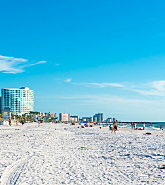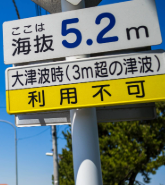On November 24 and 25, 2015 the first Scientific Symposium was held in London to discuss science for policy and operations for the new “Disaster Risk Management Knowledge Centre.” The Centre was launched by the European Commission in September this year to help member states respond to emergencies and to prevent and reduce the impact of disasters. The Centre will offer EU countries technical and scientific advice, provide an online repository of relevant research results, and create a network of crisis management laboratories. RMS was the only catastrophe modeler invited to present to the meeting.
Jointly organized by the UK Met Office and the European Commission, the symposium exposed some of the tensions between what countries can do on their own and where they require a supranational European institution. The British government contingents were particularly keen to show their leadership. The UK Cabinet Office co-ordinates inputs across government departments and agencies to manage a national risk register, identifying the likelihood and potential impact of a wide range of threats facing the country: from an Icelandic volcanic eruption to a storm surge flood to a terrorist incident. The office of the Chief Government Scientist then leads the response to the latest disaster, reporting directly to the Prime Minister.
These were not responsibilities the UK would ever consider transferring to a new European institution, because they go right to the heart of the function of a government—to protect the people and the national interest. However no single country can provide total management of events that run across borders, in particular when it is the country upstream that is controlling what heads your way, as with water storage dams. For this a Europe wide agency will be vital. The Centre will be most useful for the smaller European countries, unable to sustain research across the full range of hazards, or monitor activity around the clock. However do not expect the larger countries to share all their disaster intelligence.
Where does RMS fit into this picture? As described at the London symposium, probabilistic models will increasingly be key to making sense of potential disaster impacts and for ensuring organizations don’t become fixated on planning against a single historical scenario. RMS has more experience of probabilistic modeling than any other European science or government agency, in particular in areas such as the modeling of floods and flood defenses or for multi-hazard problems.
Two ideas with the potential for RMS leadership got picked up at the symposium. For an intervention such as a new flood defense, the results of the probabilistic model become used to define the “benefits”—the future losses that will not happen. A versatile model is required in which the user can explore the influence of a particular flood defense or even see the potential influence of climate change. Second we can expect to see a move towards the risk auditing of countries and cities, to show their progress in reducing disaster casualties and disaster impacts, in particular as part of their Sendai commitments. We know that risk cannot be defined based only on a few years of disaster data—the outcomes are far too volatile. Progress will need to be defined from consistent modeling. Catastrophe modeling will become a critical tool to facilitate “risk-based government”: from measuring financial resilience to targeting investment in the most impactful risk reduction.






